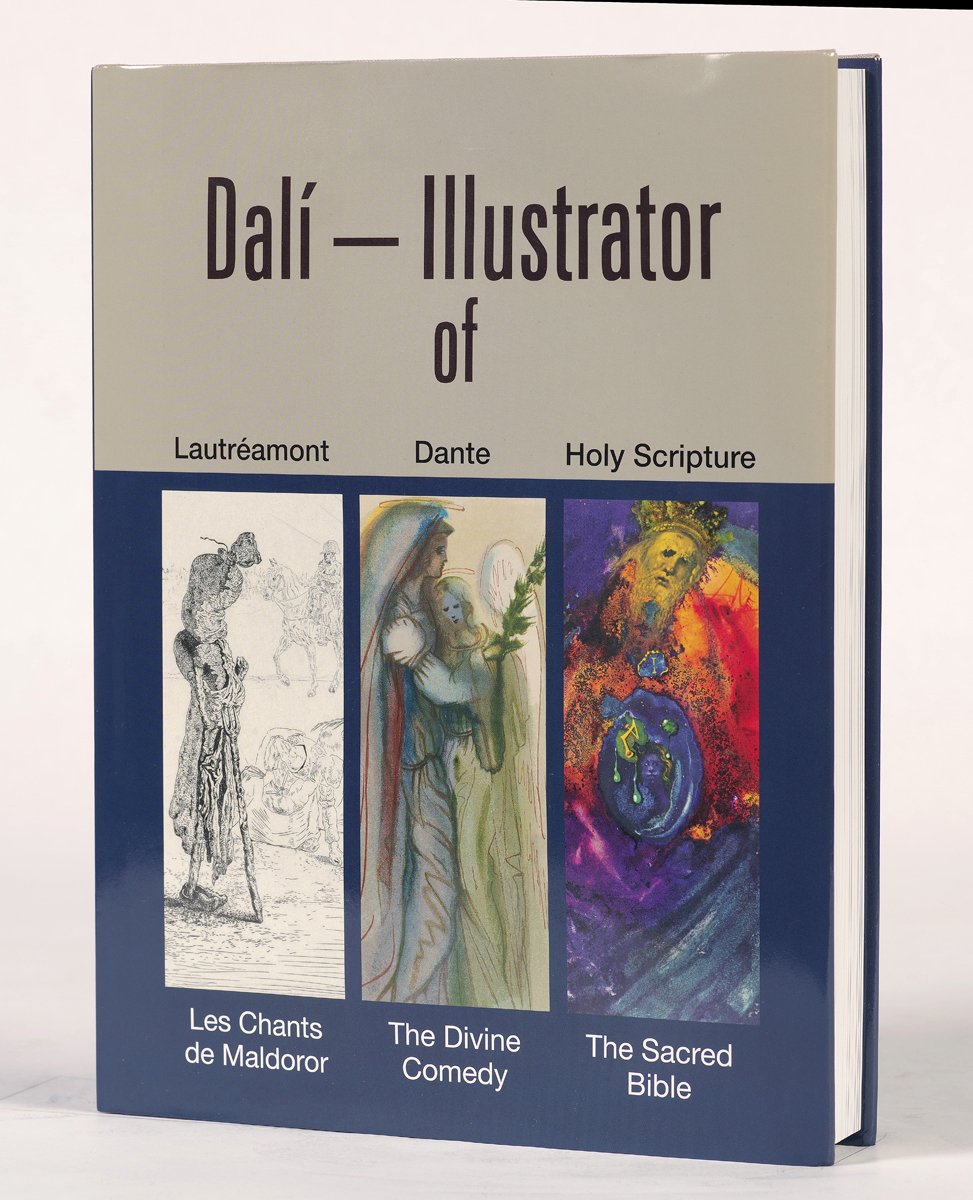A Look at the Surreal Etchings of Salvador Dalí’s Les Chants de Maldoror
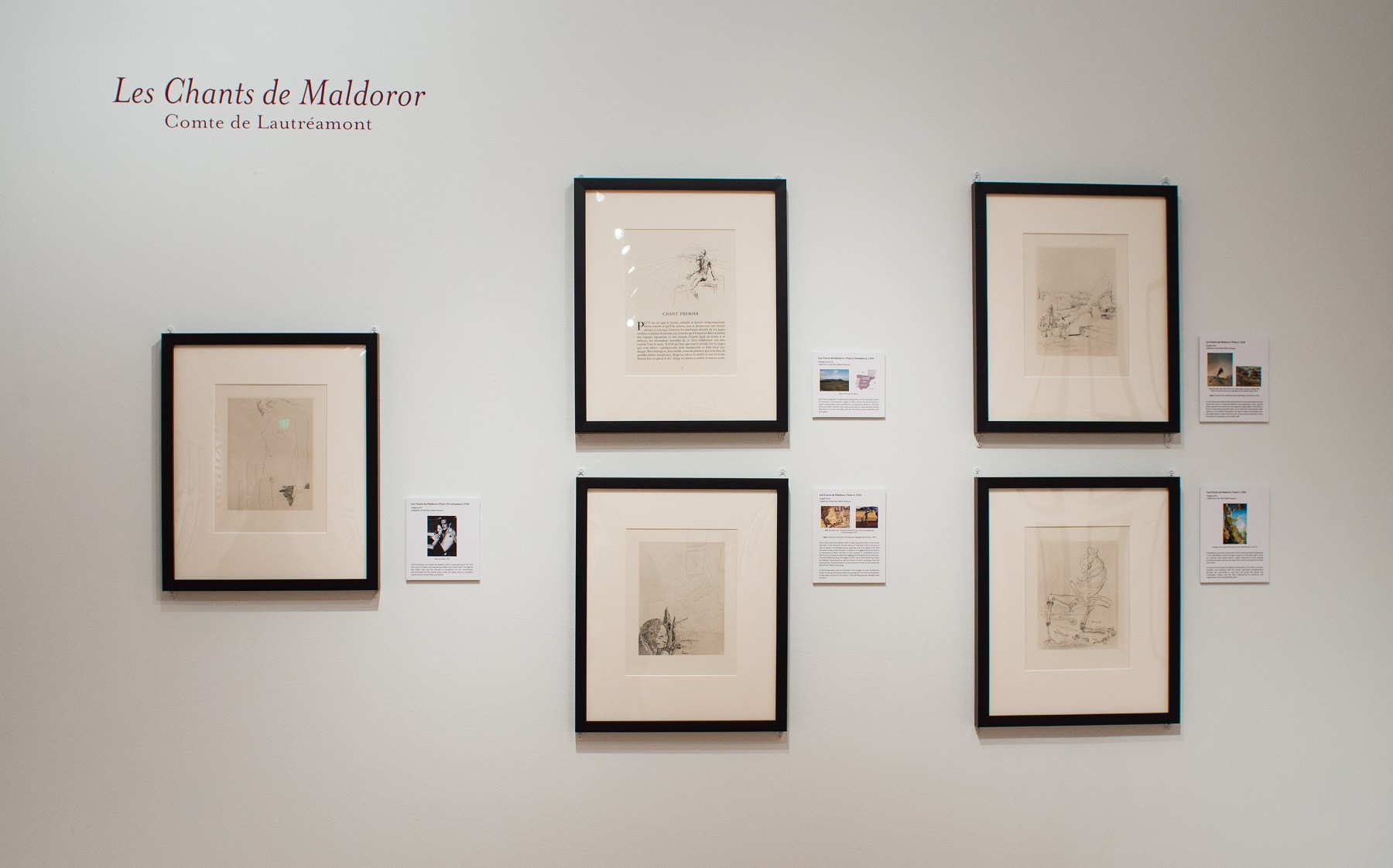
The “Les Chants de Maldoror” gallery from the “Salvador Dalí’s Stairway to Heaven” exhibition at Louisiana’s Hilliard University Art Museum.
Salvador Dalí is considered one of the most notorious provocateurs of 20th-century art. Perhaps it’s no surprise, then, that he was chosen to illustrate one of the most shocking and bizarre books of the 19th century—Les Chants de Maldoror (1868-69) by the Comte de Lautréamont.
Dalí’s Les Chants de Maldoror illustrations remain among the artist’s most sought after graphic works due to their technical brilliance, early vintage, and highly-detailed surrealistic imagery.
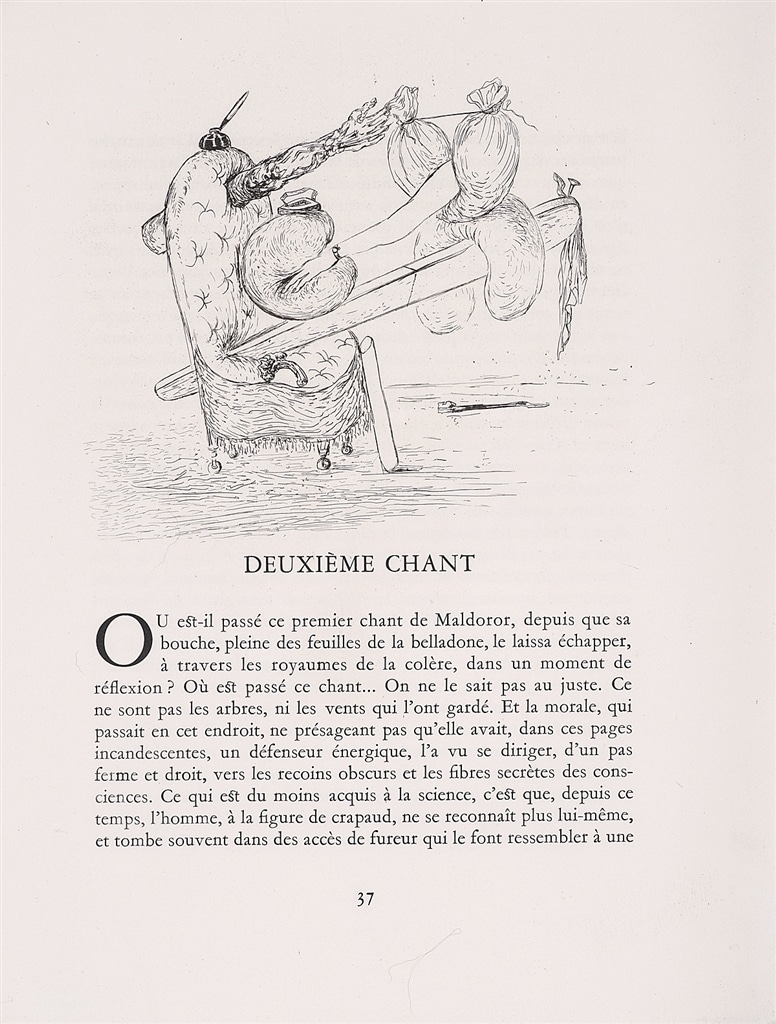
“Les Chants de Maldoror, Plate 8” (1934), Salvador Dalí
There is currently a museum exhibition touring the United States called “Salvador Dalí’s Stairway to Heaven,” which highlights Dalí’s masterful illustrations for Les Chants de Maldoror and Dante’s epic poem The Divine Comedy. You can find more information about the exhibition, sponsored by the Park West Foundation, here.
How Dalí’s Les Chants de Maldoror Came to Be
The following is excerpted from the museum catalog for “Salvador Dalí’s Stairway to Heaven,” written by David S. Rubin:
Lautréamont’s Les Chants de Maldoror (The Songs of Maldoror) was a favorite literary work among the Surrealists, many of whom found beauty in art and literature devoted to the pursuit of the irrational and the macabre. A poetic novel of sorts that unfolds in a non-linear fashion, Les Chants de Maldoror describes the violent and perverse character of a despicable protagonist who has renounced God, humanity, and conventional morality.
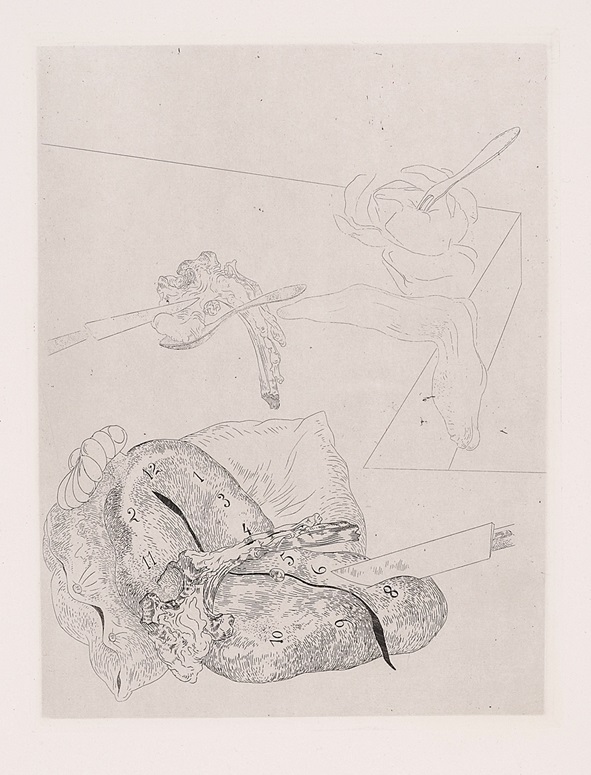
“Les Chants de Maldoror, Plate 15” (1934), Salvador Dalí
[“Intaglio” is a printmaking process in which a design is cut, scratched, or etched into a printing surface of copper, zinc, or aluminum.]In a 2009 book review of Les Chants de Maldoror for the London Independent, Richard Milward wrote that “it is perhaps the most kaleidoscopic, stomach-churning pieces of literature you’ll ever come across.” …
The impetus for Dalí’s illustrations for Les Chants de Maldoror dates to the early 1930s, when Pablo Picasso suggested to the Swiss publisher Albert Skira that he commission Dalí to create a series of intaglio prints for a new edition of Lautréamont’s celebrated book.
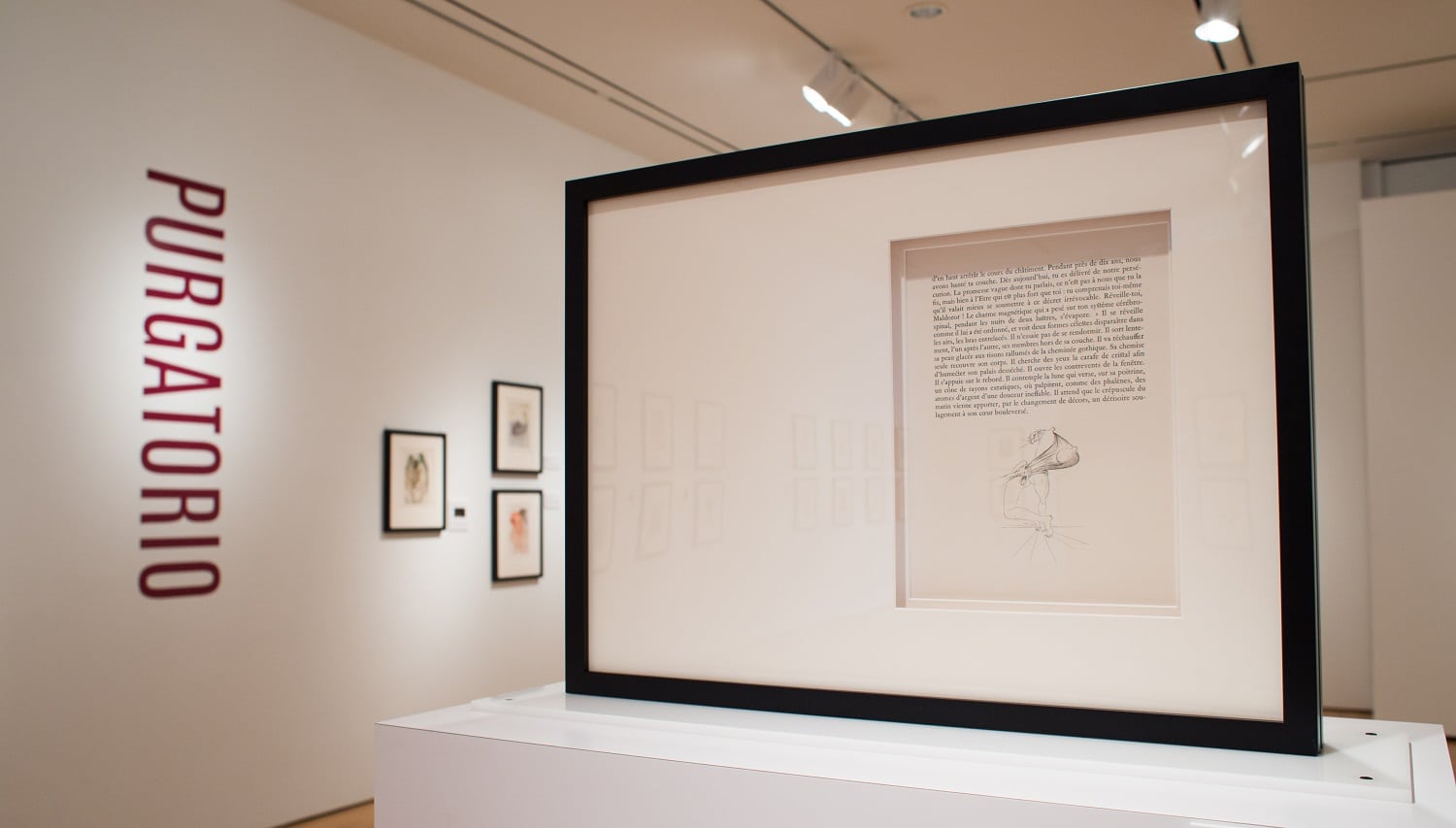
A page of Dalí’s illustrations from “Les Chants de Maldoror” from the “Salvador Dalí’s Stairway to Heaven” exhibition at Louisiana’s Hilliard University Art Museum.
Between 1932 and 1934, Dalí produced 44 intaglios for the project, and all but one appear as plates, headpieces, or tailpieces in Skira’s edition of the book.
Rather than respond to specific passages of text by Lautréamont, the majority of Dalí’s illustrations are free interpretations and are tied to themes that are prevalent in his Surrealist paintings of the 1930s, which include disturbing visions of sexual violence and death, with a strong emphasis on psychological paranoia and human mortality.
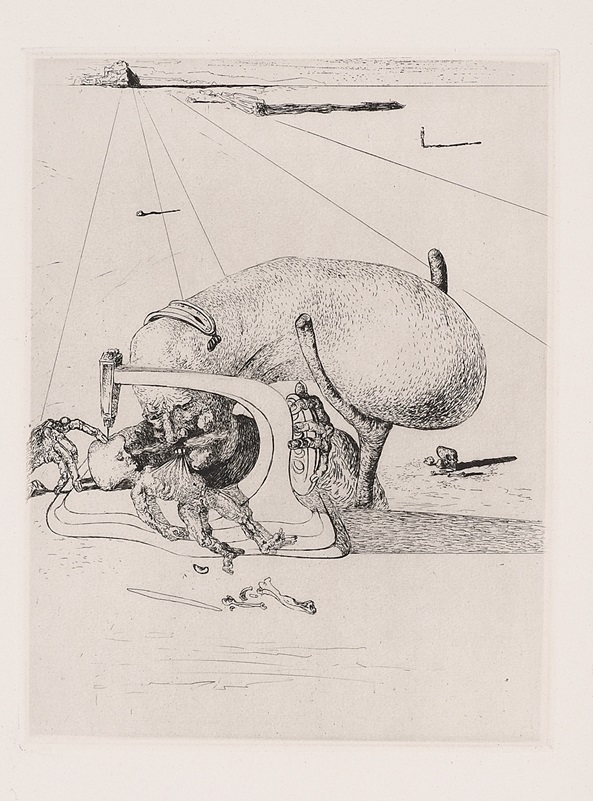
“Les Chants de Maldoror, Plate 19” (1934), Salvador Dalí
The Publication History of Dalí’s Les Chants de Maldoror
Albert Skira originally called for an edition of 300 examples of Les Chants de Maldoror, printed on various papers, to be illustrated by Dalí with etchings and drypoint remarques. When finally published in 1934, due to Skira’s financial difficulties at the time, only 100 suites were completed.
In 1974, Dalí’s publisher Pierre Argillet acquired the plates for the series and published another edition consisting of 100 suites with text, and an additional 100 suites on handmade paper.
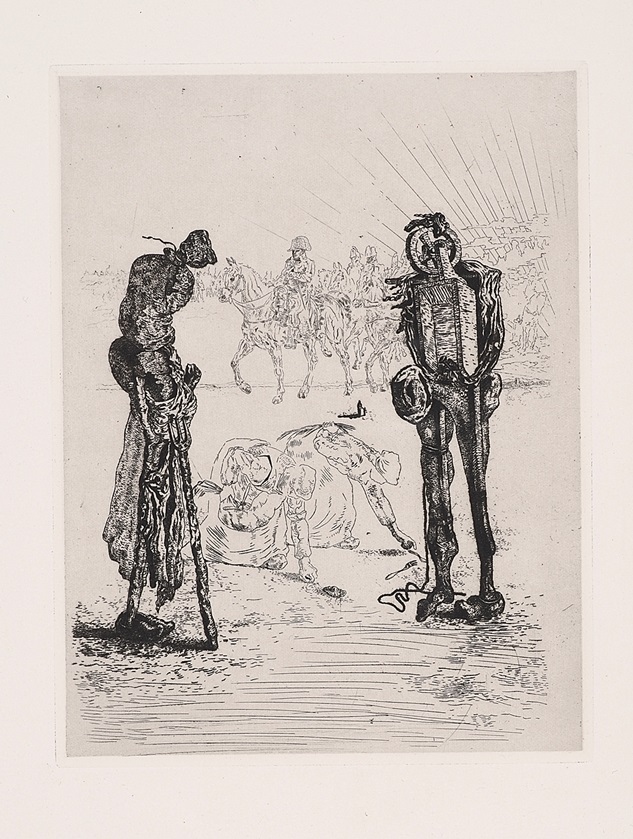
“Les Chants de Maldoror, Plate 22” (1934), Salvador Dalí
In 1991, the Salvador Dalí Museum in St. Petersburg, Florida exhibited an example of the suite. At the time, curator Peter Tush wrote: “One of Salvador Dalí’s earliest and most important graphic works is his Chants de Maldoror. It is considered… to be one of the artist’s finest book illustrations…This book was created at the height of Dalí’s Surrealist period. As a group, the Surrealists were noted for producing exquisite editions of books that combined fantastic imagery with visionary texts. Dalí’s Maldoror presented Surrealism with one of its finest examples of this tradition.”
For information about collecting works from Dali’s Les Chants de Maldoror series, contact our gallery consultants at (800) 521-9654 ext. 4 during business hours or at sales@parkwestgallery.com.
A comprehensive history of Dali’s Les Chants de Maldoror can be found in the 2006 book “Dalí—Illustrator” by noted Dalí expert Eduard Fornés.

